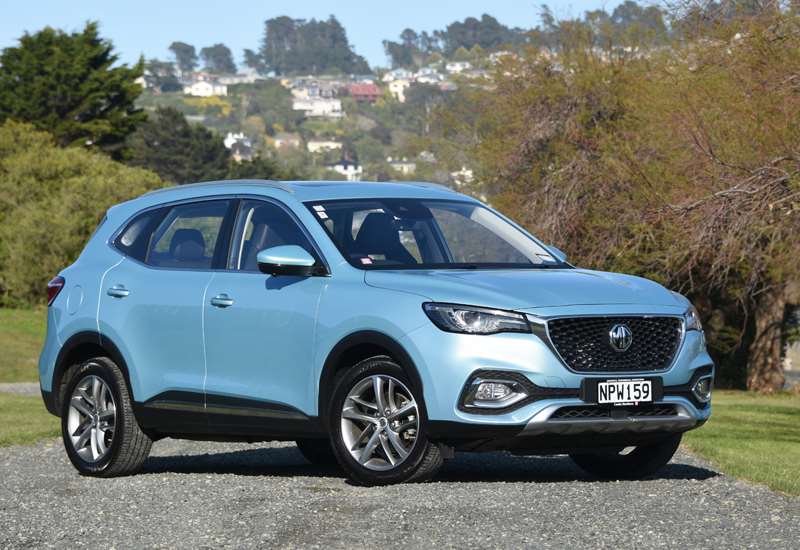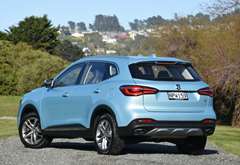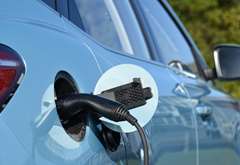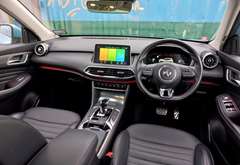David Thomson has spent time behind the wheel of MG’s other electric offering, the HS +EV plug-in hybrid.
The HS is a larger SUV sibling to the ZS and is available in 119kW/250kW pure petrol guise at four different trim levels, or in two trim levels as an 189kW/370kW front-drive plug-in hybrid. The plug-ins are priced at $51,990 for the base-model Excite and $55,990 for the flagship Essence (tested). A Clean Car rebate of $5750 applies to both variants.
Amongst a growing number of mid-sized plug-in SUVs, alternatives such as the Mitsubishi Outlander PHEV and Ford Escape PHEV offer more sophistication in key respects, including having a more customisable petrol-electric drive set-up.
However, the MG costs thousands less than its rivals.
Its drive system offers two modes: the default ‘‘auto’’ setting in which the car mixes-and-matches its use of the petrol and electric motors and, a driver-selectable EV mode which runs the car in pure-electric mode so long as there is adequate battery charge remaining. The automatic transmission is also truly automatic, with no tiptronic or paddle shift provisioned driver control.
Performance is brisk when both the petrol and battery system are doing their stuff, with a 0-100kmh sprint time of a shade under seven seconds and instant throttle response for overtaking. Progress is rather more leisurely in battery-only mode, or when the battery is depleted, and the petrol engine is doing all the work.
Open-road handling is fully competent and predictable, if somewhat uninvolving. Ride quality is generally pretty good, but with a tendency for body roll when pushing on through bends, and suspension thump when sharp surface imperfections are encountered. Some coarse-chip road rumble excepted noise levels are well contained.
A faint electric whine is apparent at slow speeds in EV mode but otherwise the HS +EV is a very quiet urban cruiser in pure electric and hybrid modes. The test car was nimble enough around town albeit for the occasional awkwardness of its large turning circle. A comprehensive camera suite comes in handy in urban settings too, though the resolution of the cameras is not fantastic.
Running in battery power alone, the HS +EV has a notional 63km range. Real-world urban range on test in Dunedin was 40-50km, depending on the terrain being traversed, and so should be enough for the daily commute. Recharge time from empty via a 7kWh wall unit is five hours, and overnight charging is possible via a standard three-pin plug.
Equipped with stop-go functionality, the adaptive radar cruise worked faultlessly on test. Other active driver support and safety systems include lane-keeping assist, blind-sport detection, rear cross traffic alert, forward-collision warning, and autonomous emergency braking.
Visually the HS +EV carries the family look of the ZS EV, with a distinctive MG grille, slim LED headlights, and softly rounded styling lines. The EV charge port flag and a discreet PHEV badge on the tailgate distinguish it from regular HS variants.
Those people who still associate Chinese cars with low-rent interiors will be surprised by the flagship HS’ cabin. Featuring a panorama sunroof, and with a range of pleasing contrast finishes, LED strip lighting and a preponderance of soft-touch surfacing, it combines design flair and quality.
The cabin is quite spacious too. Accessed via a power-operated tailgate on the Essence variant, the 451-litre boot capacity under the load cover expands to 1275-litres below the window line when the rear seats are folded down.
Provisioned with dual USB ports, back angle adjustability, and a fold-down centre armrest, the rear of the cabin is reasonably roomy for adult passengers.
The driving position is comfortable, with the Essence variant taking heated and power adjusting front seats, trimmed with a two-tone finish and (like the steering wheel and dash) red contrast stitching.
The layout of key controls and instruments is clear and logical. The main instrument cluster is fully digital, and customisable in various ways, while the 10-inch centre touchscreen deploys MG’s standard infotainment interface with its distinctive orange (audio), green (navigation) and blue (climate control) segmented home screen.
The interface offers plenty of functionality, including great connectivity and smartphone mirroring, but suffers from quite lagged responses to inputs.
Overall then, while the HS +EV Essence isn’t a car to stir the soul of a motoring enthusiast, it’s a sharply priced and well-specified vehicle with ample battery-only range for daily commuting, and decent hybrid performance for longer trips.
- David Thomson












